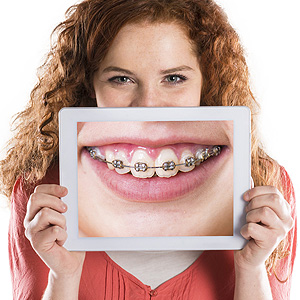If you or a family member has problems with teeth alignment or your bite, you may be considering braces. This tried and true method can straighten out most smiles — but there’s more to braces than you may realize.For one thing, orthodontic treatment wouldn’t work if it weren’t for the natural mechanism for tooth movement that already exists in the mouth. It may seem your teeth are rigidly set in the jawbone but that’s not how they maintain their attachment: that’s the job of an elastic connective tissue known as the periodontal ligament that lies between the tooth and the bone. The ligament has tiny fibers that attach to the tooth on one side and to the bone on the other to actually hold the teeth in place, much like a hammock secured between two posts.The ligament attachment also allows the teeth to move incrementally in response to environmental factors or the aging process. We harness this natural movement ability with braces to move teeth to a more desirable position. We first attach small brackets to the front crowns of the teeth (the visible portion) and then string arch wires through them. We then attach the wires to anchor points where we can adjust the amount of tension they’re exerting through the brackets against the teeth. By gradually increasing that tension, the teeth respond as they would when any force is applied against them and begin to move.By precisely controlling that movement we can transform a patient’s smile. But we believe the advantages are more than cosmetic: the teeth will function better and will be easier to care for and keep clean. These benefits, though, have to be balanced with heightened risks for root resorption (something that occurs only about 10% of the time) in which the ends of the roots can shrink, or loss of mineral content in teeth enamel where the hardware makes it more difficult to remove bacterial plaque. These risks can be reduced by closely monitoring dental health during the entire treatment process and through stepped up efforts in daily oral hygiene.The starting point for deciding on an orthodontic treatment is a thorough dental examination with x-rays or CT scan imaging. Once we have a complete picture of your misalignment problems and any other extenuating circumstances, we can recommend a treatment plan just for you.If you would like more information on orthodontic treatment, please contact us or schedule an appointment for a consultation. You can also learn more about this topic by reading the Dear Doctor magazine article “Moving Teeth with Orthodontics.”
Recent Posts
- The Importance of Emergency Dental Care: Timely Intervention is Key
- Delaying Wisdom Teeth Extraction Can Lead to Serious Issues
- Can an Abscessed Tooth Kill You? Symptoms and When to Seek Urgent Care
- How to Recognize and Effectively Treat a Dental Emergency
- Gum Disease and Heart Disease: Understanding the Connection

